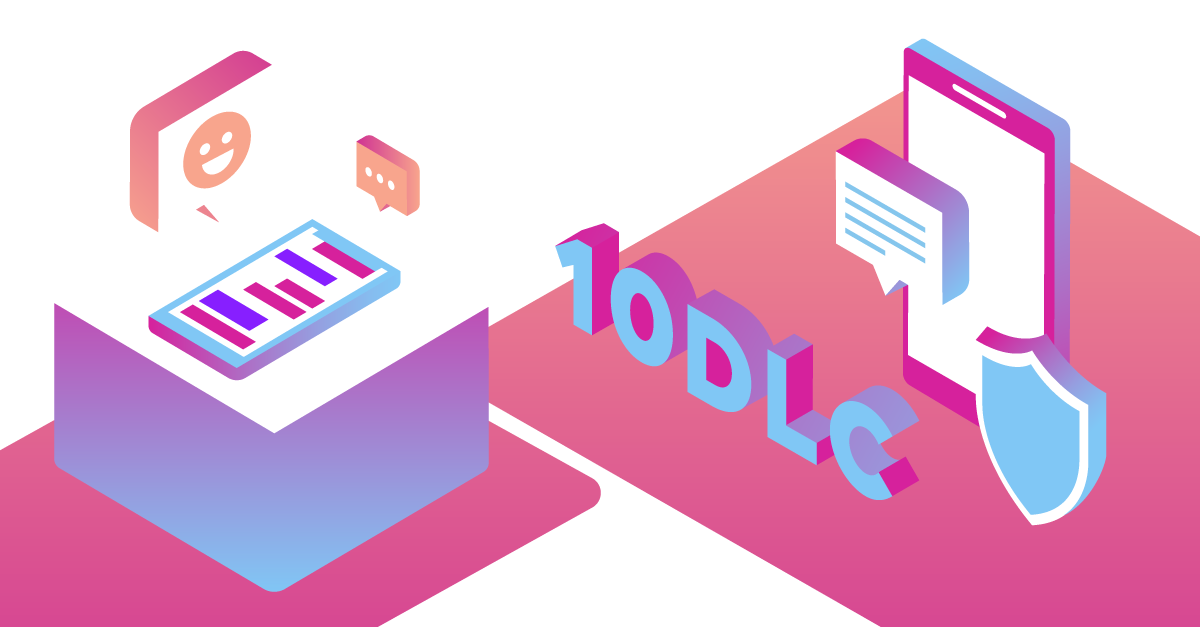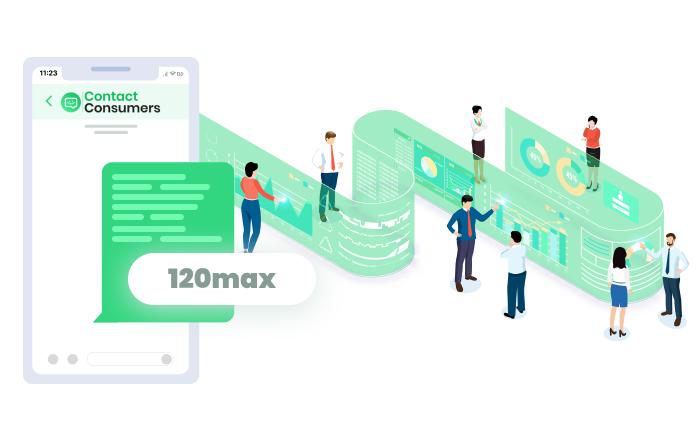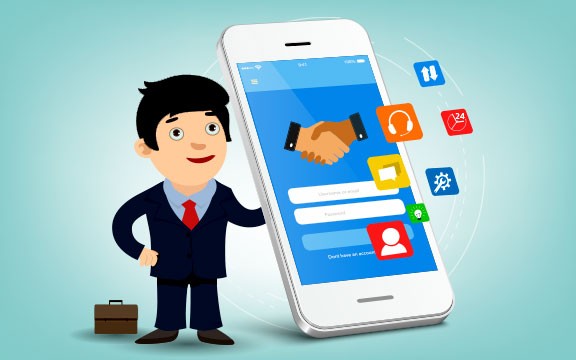SMS marketing is one of the most effective methods for staying in touch with clients and promoting your business. While it’s a relative newcomer to the digital marketing world, it’s proven much more effective than email and direct mail. In fact, almost half of consumers prefer their favorite companies to stay in touch with them via SMS over other types of communication.
Businesses that see the most value from SMS marketing include real estate agents and leisure companies, but nearly all industries can strategically put it to good use.
It’s well known among marketers that recipients read 98% of SMS messages, but even more appealing is the value customers receive from their messages. Nearly 90% of customers gain advantages from SMS loyalty programs, and 75% of clients want companies to send them offers through text.
Businesses that count on SMS marketing to retain and engage their customers should stay on top of new developments within the industry. One of the latest changes is 10DLC messaging, which has the potential to reduce your costs and increase the volume of messages you can send all at once.
Understanding Messaging Terms
So what is 10DLC? Before delving into the ins and outs of 10DLC messaging, it’s essential to understand some basic SMS terminology.
Person-to-Person (P2P) Messaging
Person-to-person messaging occurs when two individuals converse via text messages. Group chats that occur between phone numbers also count as person-to-person messaging.
Some countries include messages via an API within the person-to-person messaging category. However, the U.S. and Canada follow a rigid classification system and do not consider conversations via an API an example of person-to-person messaging.
Application-to-Person (A2P) Messaging
Application-to-person messaging occurs when a business or entity sends the same text to multiple individuals through a text marketing platform, like Contact Consumers. These texts do not have to be original; most are fully automated.
Application-to-person messaging is most commonly associated with companies that create subscriber lists and use those lists to relay important information or advertisements. For instance, a retail store may send subscribers a message concerning an upcoming sale, while a school may send updates concerning closures or upcoming events.
Long Codes
A long code is a 10-digit phone number that businesses and other entities can use to send SMS messages. Long codes have the additional flexibility of being able to receive phone calls.
There are four classifications of long codes: P2P long codes, toll-free texting, A2P long codes, and A2P 10DLC.
P2P long codes are essentially phone numbers that businesses can use to communicate directly with their clients in one-on-one conversations. They’re helpful for organizations that don’t send SMS messages but need to speak individually with their customers.
Toll-free texting helps eliminate the costs to consumers when you text them. Some telecom companies charge their customers a fee for receiving a long code text that isn’t in their area code, but all toll-free texts are accessible across the U.S. and Canada. Organizations can use toll-free texts in both SMS and MMS messaging campaigns.
Like their P2P counterparts, A2P long codes also consist of ten-digit phone numbers, but they’re only appropriate for one-way texts. Recipients don’t reply to them. An A2P long code is best for companies that want to reach multiple customers simultaneously without needing to engage in a conversation with them. A2P long codes are generally cheaper than short code messaging systems.
A2P 10DLC is the newest SMS messaging tool. While currently only available in the U.S., the system allows marketers to communicate with subscribers through one and two-way messages sent from a local number.
Short Codes
Short codes are typically five or six-digit numbers that organizations can use to send SMS or MMS messages. In most cases, businesses use short codes for one-way messaging with subscribers.
Organizations can send short code messages to thousands of recipients at once. They’re best for promotions, customer surveys, or bulk messages applicable to multiple subscribers.
Two types of short codes exist — shared and dedicated.
Multiple businesses use shared short codes at the same time. Sharing the same short code is less expensive for organizations seeking to keep a firm grip on their marketing costs.
Organizations with dedicated short codes are the only ones who can use that number. Many large corporations purchase short code numbers that reflect something about their brand, like a vanity number.
Shared short codes are no longer legal in the U.S., as in 2021, regulatory authorities became concerned that scammers would use shared numbers to steal private individuals’ information. Since then, carriers have assigned all short codes to individual organizations.
What Is 10DLC?
10DLC (10-digit long code) is the newest form of long-code messaging available to organizations and marketers. The organization receives a local, 10-digit phone number, which they can use for large-scale SMS and MMS marketing. Organizations can also use 10DLC to communicate via an API, like A2P messaging.
Companies that sign up for 10DLC messaging must receive approval from their telecom agency before beginning their campaigns, and certain companies are not eligible for 10DLC messaging.
Currently, 10DLC messaging is only available in the U.S., but it is likely to spread to other businesses around the world as the benefits become known.

What Are the Benefits of 10DLC Messaging?
10DLC will become the industry standard of SMS messaging in the upcoming years. The service is flexible and provides opportunities for better compliance and delivery.
A few of the top benefits of 10DLC messaging include:
You Can Use an Existing Phone Number
If your business has held the same phone number for a long time, you’ll likely want to keep it. Your customers may recognize it automatically, especially if your number is easy to remember.
One benefit of 10DLC is that you can leverage your existing number to send SMS and MMS messages. That way, more of your customers will recognize messages from your organization without introducing them to a new number.
Better Compliance
SMS and MMS marketers often struggle with low deliverability rates. Carriers are known to block SMS and MMS messages, especially when they don’t provide much information about the company.
With 10DLC, companies go on the offensive by providing carriers with information concerning their marketing campaigns. If the carrier approves the organization’s marketing, there is much less chance of filtered or blocked messages. You won’t have to worry about proving the validity of your business like you would if a carrier blocks you with short codes.
Faster Throughput
Organizations can send out a 10DLC message much faster than traditional long-code messages. While a conventional 10-digit number can handle only one message per second, 10DLC messaging is quicker. In fact, 10DLC boasts a speed of approximately 4,500 messages per minute, an advantageous throughput for companies with extensive subscriber lists.
Great for Local Organizations
Companies and entities whose primary market is within their area code will benefit significantly from 10DLC campaigns. Customers are more likely to open a text message from their area code rather than one from a short code or a long-distance number. They’re also a cheaper alternative for businesses that need to keep a cap on their marketing spending.
10DLC and Forbidden Messages
One caveat of 10DLC is its forbidden message policy. Carriers will not approve organizations whose campaigns fit into categories deemed as forbidden. There are seven categories of campaigns that do not meet the regulations for 10DLC messaging, including all of the following:

High-Risk Financial Services
High-risk financial services generally include lenders who charge excessive interest rates, mortgage loan advertisements, and private student loans. Payday loans are a no-go, as are other similar high-interest short-term loans. Cryptocurrency is considered to be a high-risk investment, so carriers have banned it from 10DLC eligibility.
Third-Party Lead Generation Services
A third-party lead generation service consists of marketers who purchase consumer information to advertise to them without their consent. Third-party lead generation is strongly frowned upon by carriers, and consumer regulations forbid it. If you haven’t obtained your subscriber list through genuine customer interaction, your carrier won’t approve you for 10DLC.
Debt Collection or Forgiveness
Third-party debt collectors who purchase debts from creditors and other lenders will not qualify for 10DLC messaging. Companies specializing in debt consolidation, debt settlement, or debt reduction are also barred from using it. Finally, credit repair programs will not qualify for 10DLC.
“Get Rich Quick” Schemes
Any messaging service that preys on people’s interest in building quick wealth will not qualify for 10DLC. Typical “get rich quick” schemes include risky investments similar to cryptocurrency or pyramid schemes. If you’re promising someone they can earn huge returns without much effort, your organization won’t gain approval.
Illegal Substances
While cannabis is legal in certain states, federal regulations still consider it an illegal substance. Similarly, CBD is lawful by federal regulations but illegal in some states. Due to the conflicting laws, no message campaigns concerning cannabis or CBD can take place using 10DLC. Campaigns concerning pharmaceuticals that aren’t available over the counter are also forbidden.
Gambling
Any organization that promotes gambling cannot advertise through 10DLC. The ban applies to all casino applications and gambling websites. Carriers also already ban gambling MMS and SMS messages via toll-free, short, and long codes.
“SHAFT” Use Cases
The SHAFT acronym applies to organizations advertising sex, hate, alcohol, firearms, or tobacco. Other messaging services, including toll-free numbers, short codes, and long codes, allow advertising for tobacco, alcohol, and guns so long as the company can prove they filter communications away from underage subscribers.
Preparing for 10DLC Messaging
10DLC messaging is yet to be widely available throughout the U.S., but the system is poised to be the frontrunner for all messaging systems once carriers fully adopt it. If you intend to use 10DLC for your SMS and MMS messaging, register your phone number for the service quickly.
It’s also a great time to review your subscriber list and marketing strategies to ensure they remain compliant with the ever-changing regulations.
Ensure all of your subscribers are genuine and that you comply with the best SMS and MMS marketing practices. If your campaigns concern any inappropriate uses of 10DLC and forbidden messages, you’ll want to scrub them.
10DLC and Forbidden Messages
Since SMS and MMS are such powerful marketing tools, it’s in organizations’ best interests to ensure they stay on top of regulations. If your organization doesn’t pass the forbidden message restrictions for 10DLC, you can still reach customers through other means.
Contact Consumers offers a streamlined platform for organizations seeking to reach clients effectively through email and SMS. Take advantage of our services, and improve your customer retention efforts today!




